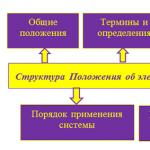Transshipment of petroleum products
Transshipment of petroleum products is their shipment (movement) from one type of transport to another. This seemingly simple procedure actually has many nuances that must be taken into account by specialists: technical characteristics of the fuel, correct loading technology, taking into account possible risks and hazards, etc.
Transshipment of petroleum products is carried out using the following types of transport:
- Automotive
- Railway
Indispensable if you need to transship oil products in large volumes. This type of transportation is carried out in single tanks, in batches of various sizes or on specified routes.
- Water
Used to transport fuel by water, from one onshore pipeline to another. A mandatory rule for such a procedure is the availability of documents from territorial authorities authorizing transshipment.
When transshipping petroleum products, adsorption and desorption are of great importance. These two properties of fuel are associated with the ability to absorb or, conversely, release volatile gases. Depending on the temperature, these compounds can be not only gaseous, but also liquid. Temperature also affects the internal pressure of the product: the higher the temperature, the greater the pressure.
In this regard, the transshipment of petroleum products must be carried out in compliance with a special temperature regime - below the flash point. For diesel fuel this limit is 55 degrees, for kerosene - 50 degrees. In addition, gasoline vapors in contact with the surface of the above-mentioned petroleum products can also contribute to an explosive state. Therefore, contact should be excluded.
In general, transshipment of petroleum products is a dangerous and responsible process in which no one is immune from emergency situations. Among their causes, experts name malfunction of transport and equipment, the occurrence of static electricity during the movement of fuel, as well as the human factor, which, as we know, is the least amenable to investigation and elimination.
Today, trade in petroleum products is unthinkable without the processes of their transportation - both by various modes of transport and through pipelines. To date, accurate quantitative data on the electrification of fuel have not been obtained, and therefore transshipment through pipes should be carried out with the utmost caution. Of course, specialists are taking all measures to ensure safety: grounding is installed, new methods are being developed to discharge containers from static electricity. But all this allows us to talk about only partial security.
Another important factor that needs to be monitored during the transshipment of petroleum products is the regulation of their quality and weight. To do this, product samples are taken at various stages of transshipment and analyzed in special laboratories. In such large companies as Euro Group, the measurement error is minimal, which means our customers can be sure that they are purchasing a quality product.
Pipeline transport of petroleum products

Oil and petroleum products can be delivered by various modes of transport: road, rail, water, pipeline. Each of them has its own characteristics and differences - in terms of technical equipment, regional location, operating conditions, throughput and other parameters. Pipeline transportation of petroleum products can rightfully be called the most unusual type of transport. In fact, it does not have separate vehicles, and the movement of fuel through pipes occurs using pumping stations. Its advantages are relatively cheap operation and no need for a large number of personnel.
Russia today is considered one of the largest suppliers of oil around the world. Many main pipelines pass through the territory of our country. This provides the ability to supply oil, diesel fuel, and motor gasoline in any direction and in virtually unlimited quantities. Pipeline transportation of petroleum products makes it possible to sequentially pump various types of oil and gas. Its work does not depend on climate, geographical location, time of year or day - that is, it is carried out continuously and systematically. The pipeline route is always shorter than a road or railway route, so transportation along it is faster. In addition, compared to other types of cargo transportation, pipeline transport of petroleum products has the best technical and economic indicators. Its use helps reduce losses of petroleum products, reduce energy consumption, and minimize the need for maintenance personnel. The disadvantages include the lack of flexibility in the logistics of transportation: after laying the pipeline, it will be impossible to change or adjust the direction of transportation.
The origins of the creation of the pipeline transport system were the famous scientist D.I. Mendeleev. He was confident that this would lay a reliable foundation for the improvement of the oil industry and provide Russian oil with access to the world market. As we see, he was right.
In addition to the type of products transported through them, pipelines also differ in the technology of movement. Thus, a distinction is made between pressure and non-pressure pipelines. They are made from alloy steel, alloys of non-ferrous metals, concrete, cast iron, polyvinyl chloride and other materials.
Long-distance transportation of liquid and gaseous petroleum products from the places of their production and processing to the consumer is provided by main pipelines. With their help, timely delivery of petroleum products is carried out over hundreds of kilometers.
Petroleum Products Research
 A comprehensive study of petroleum products is of particular relevance today, when the domestic market for fuels and lubricants is expanding every year. It helps combat abuses in oil refining and the production of petroleum products, and also reduces the number of counterfeits and the production of low-quality goods. The objectives of the study of petroleum products carried out using identification analysis are to establish a single volume and determine the generic affiliation of a particular product.
A comprehensive study of petroleum products is of particular relevance today, when the domestic market for fuels and lubricants is expanding every year. It helps combat abuses in oil refining and the production of petroleum products, and also reduces the number of counterfeits and the production of low-quality goods. The objectives of the study of petroleum products carried out using identification analysis are to establish a single volume and determine the generic affiliation of a particular product.
When establishing generic affiliation, experts classify the objects being compared to a certain standard class, based on their identical qualitative composition. An example of this is gasoline. The product obtained as a result of direct distillation of oil and the commercial product with a high octane number will belong to different generic subgroups, due to the presence of additional components in the second.
In addition to identifying the type of petroleum products, their research also has a group focus. Objects with the same properties and production conditions can be combined into groups. For example, two different high-octane types of gasoline, with the same qualitative and quantitative composition and similar physical and chemical characteristics. Also, the study of petroleum products shows data on the presence or absence of random impurities in them, thereby indicating that the product belongs to a single volume.
The research procedure is a complex, lengthy and very expensive process, due to the huge variety of petroleum products and the high cost of the equipment used to analyze them. Expert research is carried out using the following methods:
- gas chromatography— determines the group and component composition of petroleum products;
- liquid chromatography— reveals the content of various additives in fuel;
- thin layer chromatography— detects traces of petroleum products, their type and type;
- IR spectrometry— establishes the content of heteroatomic compounds and the quantitative composition of petroleum products;
- atomic spectroscopy— examines the mineral composition of the fuel.
Sometimes the study of petroleum products is complicated by the fact that the objects being compared have a similar qualitative composition. It is important to distinguish them, because the cost of petroleum products is also different.



Transshipment is the process of moving oil products from one type of transport to another. There are many points that you need to pay attention to: characteristics, shipping, risks and much more. In general, transshipment of petroleum products is a very dangerous activity, requiring maximum concentration of workers and their responsibility. Accidents can only be avoided by strictly following certain rules.
Transshipment is carried out by road, rail and water transport. It is used to deliver fuel by water, from pipelines located on different banks of rivers. Having permits is a mandatory rule for this type of transshipment.
Great attention is paid to two processes, namely adsorption and desorption. Such qualities are directly determined by the ability of petroleum products to absorb or evaporate volatile gases. Depending on the temperature, such substances are divided into two types: gaseous or liquid. It is also necessary to take into account the fact that as the temperature increases, the pressure inside the substance itself also increases. That is why during the transshipment of petroleum products certain temperature standards are strictly observed. If it is, for example, diesel fuel, then the maximum temperature is 55 degrees, but if it is kerosene, then the limit is -50 degrees. Factors such as gasoline vapors are also taken into account. This may also affect the explosion hazard. It is important to regulate the quality and mass of transported petroleum products during the transshipment process. Specialized laboratories are designed for this purpose, conducting examination of petroleum products. Their samples are necessarily taken at various stages of transportation.
Related Content
Pipeline transportation of petroleum products
Pipeline transportation of petroleum products can rightfully be called the most unusual type of transport. In fact, it does not have separate vehicles, and the movement of fuel through pipes occurs using pumping stations. Its advantages are relatively cheap operation and no need for a large number of personnel.
Features of transportation of petroleum products
Our country is the birthplace of the first industrial method of oil refining. Already in 1823, the world's first oil refinery was built in Mozdok. In 1885-1886, the first machines powered by an internal combustion engine were invented. From that moment on, humanity became severely dependent on energy resources. The introduction of internal combustion engines into all spheres of human life - from industrial production to personal transport and home electric generators - increases the need for fuel every year.
Oil depots are enterprises that are designed to receive, store and distribute various petroleum products to consumers. They represent a complex of technological, production, energy and auxiliary structures.
The oil depot usually includes the following facilities: tanks for various types of petroleum products and product pumping stations in the storage area (tank farm); drainage and loading racks (berths), pumping stations, drainage (zero) tanks in the drainage and loading area; filling containers of fuel, barrel-steaming and oil recovery plants, areas for loading tank trucks in the production and technical area. The administrative and auxiliary zone houses the administration, laboratory, mechanical workshop, boiler room, garage, fire station and other facilities. A significant place on the territory of the oil depot is occupied by the site of treatment facilities for water disposal (sewage) systems.
According to their purpose, oil depots can be near-factory, transshipment, distribution, transshipment and distribution and storage bases.
Plant oil depots are either raw materials (reception, storage of raw materials to be processed, preparing them for processing) and commodity (reception of petroleum products from installations, storage of petroleum products and shipment). As a rule, raw materials and commodity oil depots are combined into one farm, located on the territory common with the plant, or in close proximity to it.
Transshipment tank farms perform mainly the functions of an intermediate link in the transportation of oil and petroleum products by various modes of transport (water, sea, rail, pipeline). They are designed for transshipment from one type of transport to another or to the same type of transport: from sea tankers and barges to river ones, from railway routes to separate tanks, etc.
Distribution tank farms are the most common and are designed to supply direct consumers of oil and petroleum products located in the area served by the base. Distribution tank farms supply petroleum products in small containers. Formally, they are divided into regional, district, railway, water-railway, water, pipeline and deep. Oil depots of this type have a limited area of operation, and their tank farm capacity is relatively small.
Transshipment and distribution oil depots perform the functions of transshipment and distribution oil depots.
Storage bases receive, store and periodically refresh petroleum products.
Based on transport connections, oil depots are divided into railway, pipeline, water and deep.
Railway oil depots are located near railway stations and receive petroleum products along the railway siding (spur line) in bulk in tank cars and in covered wagons in containers.
Water tank farms receive petroleum products in bulk and in containers during the navigation period by sea or river transport.
Pipeline oil depots are located at intermediate and final pumping stations of main pipelines and receive petroleum products through these stations.
Deep distribution tank farms are those located at a considerable distance from railways and waterways and receiving petroleum products mainly by road transport, and in some cases by air.
With the development of pipeline transport of oil and petroleum products, pumping stations of main petroleum product pipelines, which can be head or intermediate, as well as loading points, have become objects in many ways similar to oil depots.
All oil depots, depending on the total capacity and maximum volume of one tank, are divided into the following categories:
The annual cargo turnover is the sum of the volumes of petroleum products received into tanks and shipped from them during the year. Depending on the annual cargo turnover, oil depots are divided into 5 groups:
- Group 1 - cargo turnover over 500 thousand tons/year;
- Group 2 - cargo turnover over 100 to 500 thousand tons/year inclusive;
- Group 3 - cargo turnover over 50 to 100 thousand tons/year inclusive;
- Group 4 - cargo turnover over 20 to 50 thousand tons/year inclusive;
Group 5 - cargo turnover up to 20 thousand tons/year inclusive.
Based on their significance, the operations carried out at the oil depot are divided into main and auxiliary. The main operations include:
- - reception of petroleum products delivered to the oil depot in railway cars, oil tankers, through main oil pipelines, road and air transport and in small containers (containers, barrels);
- - storage of petroleum products in tanks and container storage facilities;
Shipment of petroleum products and oils by rail, road, water and pipeline transport;
Compounding of petroleum products.
Auxiliary operations include:
- - purification and dehydration of petroleum products;
- - production and repair of oil containers;
- - repair of technological equipment, buildings and structures;
- - operation of power plants and vehicles.
The volumes of main and auxiliary operations depend on the category of the tank farm and the program of their production activities.
In order to organize the smooth and uninterrupted conduct of all operations, as well as for fire safety reasons, all tank farm facilities are distributed into zones:
- - the railway operations area includes facilities for loading and unloading petroleum products and oils. This zone contains: railway access tracks, loading and unloading overpasses, pumping stations for pumping petroleum products, and a control room for overpass service personnel.
- - the zone of waterborne oil cargo operations includes facilities for loading and unloading oil products transported by water. This zone contains: sea and river cargo piers (piers and berths), pumping stations, coastal tank farms, process pipelines, and operator rooms.
- - the storage area is represented by the following objects: tank farms, process pipelines, pumping stations, operator rooms.
- - the operational zone in which petroleum products are released in small batches into tank trucks, containers and barrels, has: truck racks for loading petroleum products into tank trucks, bottling stations for loading petroleum products into barrels, warehouses for packaged petroleum products, a laboratory for analyzing the quality of petroleum products, container warehouses, etc.
- - the area of auxiliary structures intended for servicing the oil depot includes: a mechanical workshop, boiler room, power plant or transformer substation, a workshop for the production and repair of oil containers, water supply and sanitary facilities, a material warehouse, a fuel warehouse for the needs of the oil depot, fire service facilities.
- - administrative and economic zone which may include: oil depot office, fire station, oil depot security building, garage.
- - the treatment facility area may include: an oil trap for separating oil products from water, a pumping station for the oil trap, and block treatment facilities.
The division of the oil depot into zones is quite arbitrary. For example, at oil depots where only light oil products are stored, no heating operations are performed. Not at all oil depots, if a significant amount of steam and compressed air is required, it is possible to carry out dehydration of petroleum products and purification of oils. It is also more profitable to carry out repairs and production of barrel containers centrally at large oil depots that have the necessary equipment. Many oil depots do not build thermal boiler houses. Thus, in different cases, the absence of one or more zones is possible, while some zones are sometimes combined, and additional new zones may be allocated, justified either by economic indicators or the technology of the operations being carried out.
Currently, Transbunker Group of Companies is a leading player in the bunkering market and trade in petroleum products in the post-Soviet space. The group includes more than 40 trading, service and production enterprises in 18 cities in Russia, Ukraine, Cyprus, Greece, Italy, Switzerland and Lithuania, which provide a full range of services for bunkering, transshipment and delivery of petroleum products in the Far East, Black Sea, Baltic and Mediterranean regions.
The Group's staff exceeds 2,000 people. The headquarters of the Transbunker Group of Companies is located in Moscow. Chairman of the Board of Transbunker Group of Companies - Tralla Albert Yurievich.
The main activities of Transbunker Group of Companies are:
oil refining;
bunkering of ships;
trade in petroleum products;
transshipment of petroleum products.
Oil refining
Transbunker Group of Companies owns its own oil refinery with a production capacity of 500,000 tons. petroleum products per year. The refinery was built on the basis of an existing oil terminal in the port of Vanino specifically to produce high-quality marine fuel for bunkering purposes in the ports of the Far East. Transbunker Group of Companies is a member of the Association of Oil Refiners and Petrochemists of the Russian Federation. More detailed information on refineries is presented in section 2.2.
Bunkering of ships
Transbunker Group of Companies is a physical supplier of bunkers in the following regions and ports:
Russian Far East:
Vanino (Khabarovsk Territory);
Sovetskaya Gavan (Khabarovsk Territory);
Kholmsk (Sakhalin Island);
Korsakov (Sakhalin Island);
Nakhodka (Primorsky Territory);
Vladivostok (Primorsky Territory);
Vostochny (Primorsky Territory);
fishing areas in the Sea of Japan, Okhotsk and Bering Seas;
shelf of Sakhalin Island and the Kuril ridge;
Black Sea ports:
Novorossiysk (Russia);
Yuzhny (Ukraine);
Odessa, Ukraine);
Ilyichevsk (Ukraine);
Nikolaev, Ukraine);
Kherson (Ukraine);
Oktyabrsky (Ukraine);
Ochakov (Ukraine);
Belgorod-Dnestrovsky (Ukraine);
Ust-Dunaisk (Ukraine);
Reni (Ukraine);
Baltic Sea ports:
Saint-Petersburg, Russia);
Klaipeda (Lithuania).
Today, Transbunker Group of Companies is the undisputed leader in the bunker markets of the Russian Far East and Ukrainian Black Sea ports. The company's own bunkering fleet consists of 19 vessels with a total deadweight of 38,437 tons. The Group's total bunkering volume in 2010 amounted to 624 thousand tons.
Transbunker Group of Companies is a member of the International Bunkering Association IBIA and the Association of Sea and River Bunkering Industry of Russia.
^ Trade of petroleum products
The group includes several oil trading companies that carry out transactions for the purchase and sale of petroleum products on the domestic market and supplies for export. Sales volume in 2010 amounted to 1.6 million tons per year. The main share of sales is large wholesale supplies with shipment by tankers or by rail. In addition, the company sells petroleum products in small wholesale quantities, and also develops its own retail business by creating a network of gas stations under the Transbunker brand in the Khabarovsk Territory.
^ Transshipment of petroleum products
In its activities, the Group uses its own oil transshipment terminals with a total storage capacity of 346,900 m3, including a large oil depot in the port of Vanino with a storage capacity of 220,000 m3 and the deepest berth in the Russian Far East, which allows receiving tankers with a deadweight of 1 to 80,000 tons. The maximum cargo turnover of Transbunker Group of Companies amounted to 5.1 million tons of petroleum products in 2008. The main oil transshipment depots in the ports of Vanino and Yuzhny (Ukraine) account for more than half of the cargo turnover. Oil depots are used for transshipment of third-party petroleum products; the main volume of work at the Vanino oil depot falls on the transshipment of diesel fuel and fuel oil coming from the RN-Komsomolsky Refinery.
Vladimir Khomutko
Reading time: 5 minutes
A A
How is oil products transshipped?
Transportation of petroleum products from the place of their production to consumers is carried out using railway and road tanks and oil tankers.
In the transportation process, the most important role is played by the transshipment of petroleum products (organization of unloading/loading). We will look at how this happens in railway transport in this article.
Drain
Draining of petroleum products from railway tanks is usually carried out using a drain device, which is located either in the lower part of the tank (the so-called bottom drain of petroleum products). If the bottom drain is faulty, then use the tank neck (top drain).
When using the open gravity drain method, petroleum products are delivered through a drain device located at the bottom of the tank, using drain trays, to the central chute. Further, oil products flow from it through a pipeline into a “zero” receiving tank, which is located below the earth’s surface. Since losses due to the evaporation process are possible when using this method, it is used only for draining petroleum products with low volatility.
One of the options for this scheme is an inter-rail drain, in which the central chute is located immediately under the tank, which eliminates the need for portable chutes.
The main disadvantage of the listed methods is the possible contamination of drained oil products.
To eliminate this drawback, a closed gravity drain method is used. Its difference is that instead of gutters, either a flexible hose or a pipe with an articulated joint is connected to the lower drain device. In this case, the function of the central gutter is performed by the collector pipeline. Such drainage schemes can also be used for gasoline of various fractions, since losses from evaporation are minimized here.
Siphon gravity drainage is performed through the neck. Its use is possible under one condition - if the level of the receiving tank is lower than the level of the drained tank. The movement of the drained product is ensured by a vacuum created in the riser by a vacuum pump. To avoid rupture of the jet, which can lead to failure of the siphon, the pressure should not be lower than the elastic pressure created by the oil vapor.
The main disadvantage of this method is low productivity.
The fastest way to drain oil products is by forced bottom drain, which uses a special pump located in the lower drain device of the tank and a pipe system with articulated joints.
Forced drainage can also be from the top.
It occurs through the neck with special drain risers. The beginning of the movement of the product is ensured by a vacuum pump, and then another pump is connected, which pumps the oil product into the receiving tank. One of the options for such drainage is ejector, which is used mainly for light petroleum products.
Pouring
Loading of petroleum products into railway tanks can be open or closed stream and sealed.
Filling with an open jet implies contact of the product with the atmosphere, which leads to increased evaporation (especially of light petroleum products), as well as the formation of static electricity. Both of these processes are undesirable, as a result of which such loading has limited use only when loading dark oil products.
Filling with a closed stream is carried out using a hose, which is lowered to the bottom of the tank, and the stream of the loaded product comes into contact with the air for a short time - at the very beginning of the discharge. It is worth noting that with this method, gasoline losses are reduced by approximately half (compared to an open stream).
Hermetic filling is performed using ASN - automated filling systems. Their design includes a sealing lid, a telescopic pipe and a line that ensures the removal of the resulting steam-air mixture.
Draining/filling of petroleum products. Methodology
During draining and loading operations of all types of petroleum products, except for fuel oil, which has a flash point of 120 degrees C and below, it is necessary to use closed-type draining and loading devices. The use of open types of such devices is permissible when transshipping fuel oils and products with a flash point higher than 120 degrees C.
Open gravity drainage devices for petroleum products with high viscosity and a high level of hardening imply the use of special drain trays, each of which consists of outer and inner walls, forming a so-called steam jacket. Steam is admitted through a special pipe, and condensate is discharged through a fitting and hose.
The use of the inter-rail discharge method when unloading oil products with high viscosity implies the use of bottom discharge installations of the LNG-200 type.
Double-sided open gravity drainage is carried out into a gutter located in the inter-track space. If several types of high-viscosity petroleum products are drained, this chute is divided into several compartments, and each of them has its own pipeline leading to a “zero” tank equipped with a special filter. The overpass is equipped with a steam pipeline with steam distribution pipes.
With the inter-rail method of draining, the oil product from the chute enters the collection well. After this, having passed through the grate, it is delivered to the “zero” tank through a drain chute.
In the case of using both methods, it is considered advisable to use special collector troughs with a steam jacket. This makes it possible to heat highly viscous types of petroleum products, as a result of which constantly thickening crusts do not form on the chute machines.
For sealed drainage/filling, special installations are used, equipped with pipes with articulated joints.
For unloading/loading light petroleum products, installations are used both without steam heating (USN-150; USN-175; USN-200) and equipped with steam heating (USN-150Pp; USN-175Pp; USN-200Pp). They are connected to the tank drainage device. All parts of such installations that are in direct contact with the tank pipes are intrinsically safe.
USNs come with four and five hinges.
Five-hinged units with steam heating (USN-150/5Pp; USN-175/5Pp; USN-200/5Pp) make it possible to correct possible deviation of the device axis from a strictly vertical position. This allows you to significantly increase the tightness at the point of connection of the simplified heating system to the tank drainage device.
The device for top loading and draining of petroleum products is a drain riser equipped with a hand pump. Such designs are typically used at small oil distribution depots and are used to operate single tanks. The gap between the risers is four meters, which makes it possible to service different types of tanks and does not require reformatting the trains.
Route loading and unloading of petroleum products involves their transshipment using overpasses. An overpass is a series of unloading/unloading devices that are located along the railway tracks at a distance of four to six meters from each other. These devices are connected by a common platform for the movement of service personnel and common manifolds.
Non-flammable materials are used for the manufacture of overpasses. The dimensions of the overpass correspond to the dimensions of railway tanks. An ordinary overpass looks like a long gallery with a number of operational platforms. The height of such a gallery from the rail is from three to three and a half meters. The transition to the roof of the tank occurs along special folding walkways. The width of the overpass passage must be at least one meter. At the ends of the overpass there are stairs for climbing up to it.
Classification of overpasses is made according to the following criteria: according to their purpose; by the number of routes that it can accept simultaneously; by type of oil products handled; on technical performance.
According to their purpose, overpasses are divided into:
- drain;
- liquid;
- drain and bulk (universal).
By the number of routes served simultaneously:
- one-sided (gross weight norm - less than 700 tons);
- double-sided (gross - more than 700 tons).
Installation of top loading of petroleum products
By type of petroleum products:
According to technical design:
- covered;
- open.
Indoor racks are necessarily used for working with aviation oils, various types of jet fuel and aviation gasoline. If the loading devices on the trestle prevent dust and sediment from entering the tank during the supply of petroleum products, then it is permitted to use an opening gallery type.
A two-way rack for loading light types of petroleum products can be gravity or forced. Collectors on such an overpass are located along its sides under the personnel deck. Loading hoses attached to the risers must reach the bottom of the tank being filled by at least 200 millimeters to ensure the supply of product without a high drop in the jet. The entire feeding process is monitored and controlled from the elevated platform.
This overpass has folding movable walkways that allow you to safely move to the roof of the tank. The ascent and descent from these walkways is ensured by hand winches.
The unloading riser rack for light types of petroleum products is also equipped with special stripping collectors and a stripping riser. Oil products along the risers and pipes of such an overpass can move in two directions, which ensures both draining and filling.
The NM type covered overpass provides protection for personnel from bad weather, which creates comfortable conditions for their work. In addition, it prevents watering of the petroleum product supplied to the tank. This type of overpass is equipped with suspended hoists, with the help of which the lifting and lowering of portable heating equipment is carried out.
The double-sided loading gallery rack, designed for working with dark petroleum products, differs from others in the upper location of the collector, which is also equipped with outlets for loading. The ends of these outlets are equipped with retractable telescopic pipes, which allows them to be removed after loading.
The composition of the rack equipment also depends on the grade of the oil product being processed. For example, to work with dark, high-viscosity products, racks are equipped with either steam lines or electric heating devices, and unloading racks for light oil products are equipped with risers and closed-type collectors. Dark petroleum products are usually supplied through open trays.
Route loading of petroleum products into railway tanks is not protected from overflow. To solve this problem, an automatic filling system is used.
Automated petroleum products loading system (automated loading riser)
An example of such a riser is the ASN-14ZhD-K, which is designed for top filling of liquids into tanks.


















